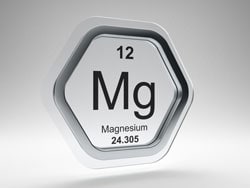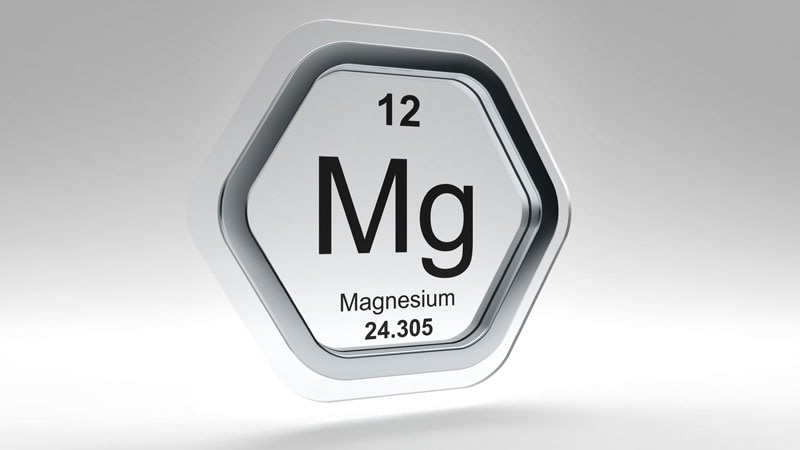Acute exacerbations of chronic obstructive pulmonary disease (AECOPD) are a major driver of disease-related morbidity. Their prevention and treatment are a focus of COPD management. Antibiotics, corticosteroids, and nebulized bronchodilators are all given to patients with AECOPD, and while the supporting data aren’t perfect, there’s little debate surrounding their use. These medications are well known to most physicians; we’re comfortable with their efficacy and aware of their side effects. They are nothing if not familiar.

Photo Credit: Conceptw/Dreamstime
What about magnesium (Mg), though? Apparently, in the ER it is part of the standard AECOPD cocktail. I would argue that Mg is familiar to most too; every internal medicine trainee in the United States is taught to infuse 2 g of Mg intravenously for any inpatient (ICU or otherwise) with a serum level < 2.0 mg/dL. In fact, “electrolyte protocols” are part of the order sets at most hospitals where I’ve worked. Mg is infused reflexively when it drops below certain levels.
I’m less familiar with using Mg in the setting of an AECOPD, though. A recent online post by an academic ER physician (Richard Pescatore, DO) urged caution in this setting. He argues that too many in the ER are embracing the “Dutch Hypothesis” and treating asthma and COPD as the same disease. Pescatore believes that Mg works for asthma exacerbations because asthma is a disease of smooth muscle and large airways, while COPD is not. COPD, he says, is a disease of the small airways, largely resulting from parenchymal distortions due to emphysema. Therefore, Mg, which is thought to act on the smooth muscle surrounding the large airways, won’t be beneficial for AECOPD and may even cause harm.
Data Are Lacking
What data exist for using Mg for AECOPD? The best randomized controlled trial (RCT) I could find was published in 1995 and is cited in the reader’s rebuttal. The trial found a significant improvement in peak expiratory flow rate (PEFR) with Mg and a nonsignificant reduction in hospitalizations.
A poorly done systematic review of RCTs using Mg for AECOPD was published in 2014, and in 2020 the Agency for Healthcare Research and Quality (AHRQ) included Mg in its well-executed meta-analysis of pharmacologic treatments for AECOPD. Data across the four to five Mg RCTs included in each of the reviews (study inclusion criteria were slightly different) could not be combined. All RCTs were small, and only soft outcomes like PEFR and forced expiratory volume in 1 second (FEV1) seemed to improve with Mg. No adverse events were noted, but this should be interpreted with caution given that many studies did not report on adverse events at all.
A small RCT published this year (after both systematic reviews were completed) showed that using intravenous magnesium sulfate had no significant effect on FEV1, vital signs, or symptoms.
In summary, the data aren’t great. Mg doesn’t show up at all as a treatment option in the Global Initiative for Chronic Obstructive Lung Disease (GOLD) Report on COPD, and the authors of the AHRQ review concluded that large, high-quality RCTs are needed to assess the impact of Mg in AECOPD. Although I didn’t do an extensive review of Mg for asthma exacerbations, it’s not clear that the data here are much better. Mg gets an honorable mention (add for severe exacerbations when there’s inadequate response to standard treatments) in both the 2007 National Heart, Lung, and Blood Institute (NHLBI) guideline and the 2019 Global Initiative for Asthma (GINA) guide. The 2020 update to the 2007 NHLBI guideline is more targeted in its review and does not cover Mg as a treatment option. On the basis of my anecdotal clinical experience and on networking with airway experts, I do think Mg is used more often for asthma than for AECOPD.
Final Thoughts on Using Mg for AECOPD
All that being said, is it reasonable to use Mg for AECOPD? I think so. I’d stick to using it for severe cases where conventional treatments have failed, just like the NHLBI and GINA advise for asthma. I’d also limit it to 2-3 g, which is the dosing range employed by several of the existing AECOPD RCTs. The assertion that Mg may be harmful in AECOPD because COPD affects the small airways, and asthma does not, is misguided. Both affect the small airways. Furthermore, none of our inhaled therapies reach the small airways, so one can’t argue against using Mg because it only targets larger airways without abandoning albuterol and ipratropium as well. I don’t think anyone would advise that. Given what we now know about asthma and COPD phenotypes and asthma-COPD overlap, I’d caution against pedantic theories about response to therapies.
Photo Credit: Conceptw/Dreamstime
Aaron B. Holley, MD, is an associate professor of medicine at Uniformed Services University and program director of pulmonary and critical care medicine at Walter Reed National Military Medical Center. He covers a wide range of topics in pulmonary, critical care, and sleep medicine.
Follow Medscape on Facebook, Twitter, Instagram, and YouTube

